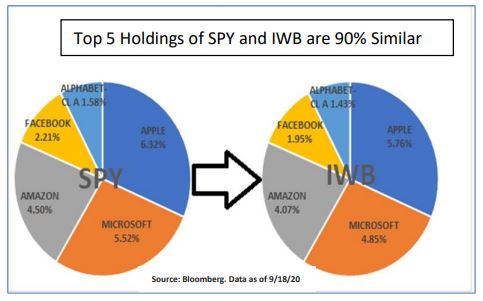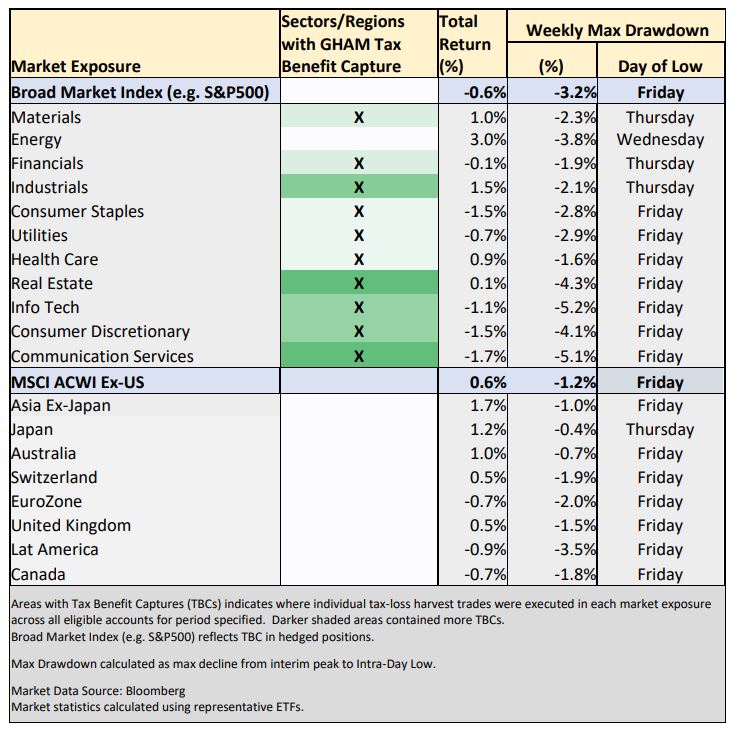By Solomon G. Teller, CFA, Chief Investment Strategist, Green Harvest Asset Management
Managing risk continues to be a top concern, so let’s carry on last week’s discussion about the market dynamics favoring hedging strategies that directly short sell Exchange Traded Funds (ETFs). It may seem counterintuitive, but many of the benefits from hedging via shorting ETFs are related to factors that make ETFs attractive for building long positions in a portfolio. Consider the following three ETF characteristics and their implications:
Exposure: ETFs are increasingly popular for their ability to construct portfolios with one or several ETFs. Already this year, $333 billion in new assets has flowed into ETFs. Many offer exposure to a whole market index, or a market segment benchmarked to an index. The same ability to construct entire portfolios with ETFs enables entire portfolios to be hedged with one or more ETFs. With so many different ETF offerings, an exposure can often be well-matched or aligned to the long side of a portfolio.
Liquidity: In addition to the liquidity of the ETF itself (i.e. the ability to trade it directly), ETFs’ unique creation/redemption process enables a valuable additional source of liquidity. The creation/redemption process enables new shares of the ETF to be created using the underlying securities, which can increase as necessary, the availability of shares that may be borrowed so as to short sell.
Swappability: With over 2000 ETFs available today in the U.S. alone, there are many ETFs offering similar but not identical exposures. The ability to swap different ETFs makes them powerful tools for Tax Benefit Capture (TBC) on both the long and short sides of the portfolio. Capturing a tax benefit via tax loss harvesting requires exiting an existing position. Being able to replace that position with a similar enough substitute enables maintaining the desired market exposure while simultaneously capturing a tax benefit.
 For illustration, consider a portfolio benchmarked to the S&P500. To reduce risk exposure and volatility, a short position (the hedge) in SPDR S&P 500 ETF (SPY) equivalent to 20% of the portfolio is initiated. The short position can also provide TBC opportunities. Should the short position in SPY be at a loss, the SPY position could be exited and replaced with a similar target percentage short position in a similar but not identical ETF, such as iShares Russell 1000 ETF (IWB). The chart on the right compares the two Exchange Traded Funds’ respective top holdings as of September 18, 2020. As the chart shows, SPY and IWB are not identical – their top 5 holdings have different weights – but they do offer similar hedged exposure with 90% overlap among those holdings. ETFs’ unique combination of features lends itself well to a variety of uses. With markets hovering just below their recent highs and volatility expected to rise, particularly around the election, investors may want to consider risk management tools such as ETF-based hedging strategies and consider what those tools can do for them.
For illustration, consider a portfolio benchmarked to the S&P500. To reduce risk exposure and volatility, a short position (the hedge) in SPDR S&P 500 ETF (SPY) equivalent to 20% of the portfolio is initiated. The short position can also provide TBC opportunities. Should the short position in SPY be at a loss, the SPY position could be exited and replaced with a similar target percentage short position in a similar but not identical ETF, such as iShares Russell 1000 ETF (IWB). The chart on the right compares the two Exchange Traded Funds’ respective top holdings as of September 18, 2020. As the chart shows, SPY and IWB are not identical – their top 5 holdings have different weights – but they do offer similar hedged exposure with 90% overlap among those holdings. ETFs’ unique combination of features lends itself well to a variety of uses. With markets hovering just below their recent highs and volatility expected to rise, particularly around the election, investors may want to consider risk management tools such as ETF-based hedging strategies and consider what those tools can do for them.
Tax Benefit Capture Heat Map for period spanning September 14 – September 18, 2020:
Disclaimers:
Performance quoted represents past performance, which is no guarantee of future results. Investment return and principal value will fluctuate, so you may have a gain or loss when the portfolio is liquidated. Current performance may be higher or lower than that quoted. Performance of an index is not illustrative of any particular investment. It is not possible to invest directly in an index.
GHAM does not provide tax advice. Although GHAM does not employ a Certified Public Accountant on its staff, we have, and continue to work with outside accounting firms and outside tax counsel that provide ongoing guidance and updates on all relevant tax law. Federal, state and local tax laws are subject to change. GHAM is not responsible for providing clients updates on any changes in tax laws, rules or statutes.
Reasons to harvest capital losses, sources of capital gains and the suggestion that mutual funds distribute capital gains are for example purposes only and not meant to be tax, estate planning or investment advice in any form or for any specific client.
All performance and estimates of strategy performance, after tax alpha, after tax alpha opportunities and other performance figures are derived from data provided from multiple third-party sources. All estimates were created with the benefit of hindsight and may not be achieved in a live account. The data received by GHAM is unaudited and its reliability and accuracy is not guaranteed.
The availability of tax alpha is highly dependent upon the initial date and time of investment as well as market direction and security volatility during the investment period. Tax loss harvesting outcomes may vary greatly for clients who invest on different days, weeks, months and all other time periods.
All estimates of past returns of broad, narrow, sector, country, regional or other indices do not include the impact of advisor fees, unless specifically indicated. Past performance and volatility figures should not be relied upon as an indicator of future performance or volatility.
This material is not intended to be relied upon as legal, investment or tax advice in any form or for any specific client. The information provided does not take into account the specific objectives, financial situation or particular needs of any specific person. All investments carry a certain degree of risk, and there is no assurance that an investment will perform as expected over any period of time.
As a convenience to our readers, this document may contain links to information created and maintained by third party sites. Please note that we do not endorse any linked sites or their content, and we are not responsible for the accuracy, timeliness or even the continued availability or existence of this outside information. While we endeavor to provide links only to those sites that are reputable and safe, we cannot be held responsible for the information, products or services obtained from such other sites and will not be liable for any damages arising from your access to such sites.
Hedged Strategies Risk
The Hedged Strategies take “short” positions by selling an index ETF that the client portfolio does not own, which exposes the portfolio to costs and risks that are not associated with owning securities long. Certain of these costs and risks are described in the margin disclosure statement provided to you by the financial institution holding your account, and we encourage you to discuss those risks and costs with your advisor. The following disclosure discusses the risks related to Green Harvest’s investment strategy.
A short position has an opposing or “inverse” relationship to a long position on the same asset. Generally, the short index position will lose money when the overall long portfolio is rising in value, and the short position will increase in value when the long portfolio is losing money. This relationship provides the “hedging” aspect of the Strategy. Green Harvest seeks to short an index ETF that is expected to have a strong inverse relationship with the strategy benchmark. If the index ETF underlying the short position deviates from this inverse correlation to the benchmark performance, then the Strategy will not perform as desired, and you could have limited tax loss harvesting outcomes as well as low or negative portfolio returns. Although the short position is intended as a hedge against negative or low returns of the markets, the Strategy’s return may be negative. Any dividends paid by ETFs underlying the short position must be paid to the institution lending the security and thus will not generate income for your account.
Tax loss harvesting opportunities exist when the long portfolio has gains and when the short position has losses. Portfolio losses may result in margin calls from your financial institution, and when you instruct Green Harvest to sell portfolio assets in response to margin calls, such sales could generate taxable capital gains. Alternatively, you will be required to add cash to the account in response to margin calls.
Short positions can lead to more volatile performance of the underlying security. In addition, the ETFs underlying short positions may experience periods of low trading volume or reduced liquidity, which would restrict the ability to enter short positions. In these periods, Green Harvest can seek to enter short positions through other available transactions, which may have higher transaction costs. All investments are subject to liquidity risk, especially when markets are not functioning normally. If Green Harvest is unable to acquire or dispose of holdings quickly or at prices that represent perceived market value, then the Strategy will be negatively impacted. Examples of events that can lead to heightened liquidity risk include domestic and foreign economic crises, natural disasters, political instability, and regulatory changes.


